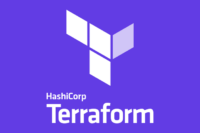Terraform is a tool for building, changing, and versioning infrastructure safely and efficiently. It can manage infrastructure across multiple providers, including public cloud providers such as Amazon Web Services, Microsoft Azure, and Google Cloud Platform, as well as private infrastructure such as on-premises servers and virtual machines.
One of the key benefits of Terraform is its ability to manage infrastructure as code. This means that instead of manually configuring resources through a web-based interface, you can use Terraform to define and manage your infrastructure in a file, using a high-level configuration language called HashiCorp Configuration Language (HCL). This makes it easier to automate the provisioning and management of your infrastructure, and allows you to version, review, and collaborate on infrastructure changes in the same way that you would with any other code.
Another benefit of Terraform is its ability to support multiple infrastructure providers. This means that you can use the same tool and configuration language to manage resources across different providers, making it easier to migrate workloads between environments and avoid vendor lock-in. Additionally, Terraform provides a registry of community-contributed modules that you can use to quickly and easily deploy common infrastructure patterns.
Overall, Terraform is a powerful tool for managing and provisioning infrastructure, and can help you reduce the time and effort required to build, change, and manage your infrastructure. Whether you’re running workloads in the public cloud, on-premises, or a combination of both, Terraform can help you automate and manage your infrastructure in a safe and efficient manner.
